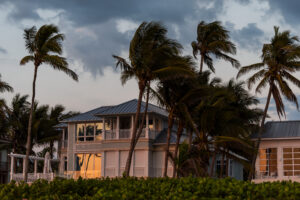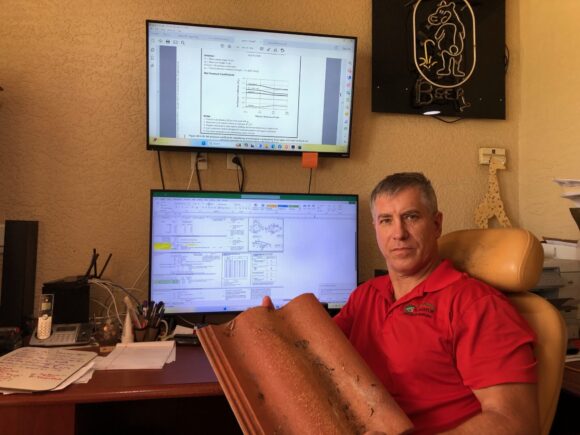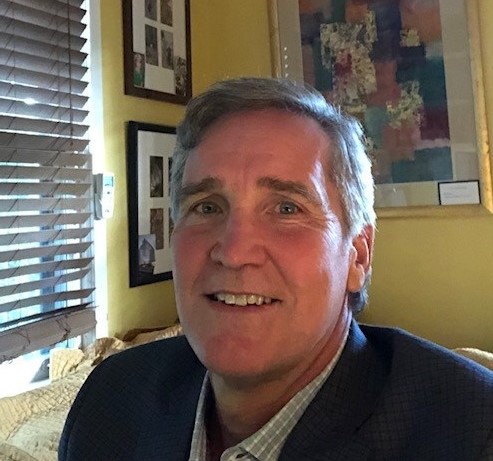He’s been called a “do-gooder,” a “troublemaker” and a whistleblower. And he may be the best friend the Florida property insurance industry has.
A mechanical engineer based in Edgewater, George Miles has filed formal complaints with the Florida Board of Professional Engineers against no fewer than 12 other engineers, alleging that all of them have committed fraud by making false assertions for plaintiffs in insurance claims litigation.
The assertions include a questioned wind-acceleration theory; claims that widespread rust on a metal roof happened overnight during a storm; that heavy tile and concrete roofs were damaged by relatively minor winds – despite testing that shows otherwise; multiple examples of wear and tear that the plaintiffs’ witnesses said came from storms; inspection reports made without on-site inspections; use of unproven brittleness testing on roof shingles; and even what Miles said was tomato paste smeared on a ceiling in an attempt to show staining from a roof leak.
“For me, it’s about stopping the fraud and deceit,” said Miles, age 51, who has testified for or drafted inspection reports for insurance defense attorneys as well as for plaintiffs’ lawyers. “It’s about morals and ethics in engineering.”
Miles said that in recent years, he has investigated 25 to 30 insurance claims per month. And, he argues, 95% of them were fraudulent.
“We’ve heard so much about what’s causing the insurance crisis in Florida,” said Miles, who has seen the premiums on his own stately home more than double in recent years. “But it’s not the hurricanes. It’s not the wind. It’s the fraud. I’ve seen it over and over again.”
Insurance companies have long complained about a flood of unnecessary litigation and suspected fraud in claims, blaming unscrupulous roof contractors, a few public adjusters and even some homeowners for exaggerating or falsifying damage. But few carriers, if any, have taken the step of seeking disciplinary action against plaintiffs’ expert witnesses.
After years of seeing surprising and “blatantly wrong” reports from opposing engineers, Miles said he couldn’t look the other way any longer.
So far, the Florida Board of Professional Engineers has investigated several of Miles’ complaints but has declined to discipline any engineers, although it sent a letter of guidance to one of the accused. Miles, head of Alligator Consulting Engineers since 2018, recently filed two new complaints and the board is expected to release its findings on those cases sometime in September.
Perhaps the highest-profile complaint was made against Grant Renne, an engineer in Port Orange and one of the most prolific expert witnesses in Florida in recent years. Renne, in business for 34 years, said he has worked in more than 8,000 property insurance disputes in his career, mostly for plaintiffs.
In some 2,000 civil trials, Renne said, his testimony has been disallowed only a handful of times.
One of Renne’s frequent and most contentious assertions in claims disputes is that storm winds can speed up – as much as 2.5 times – as they move over the roof of a structure, causing more damage than would be expected from weather-service-recorded wind speeds in the area. Renne’s reports have given credence to many claims of wind damage that Miles and insurance lawyers say are the result of nothing more than age and wear and tear.
“It’s completely wrong,” Miles said. “There’s no proof that his view is correct.”
Renne’s hypothesis, known as the “longer-path” or “wind up-speed” theory, employs an interpretation of the famous Bernoulli’s Principle, which was first posited in the 1700s. The principle has been cited to explain how airplane wings create lift, but it continues to be the subject of some debate.
When asked about his theory, Renne told Insurance Journal that it is supported by a number of academic studies, including one by University of Florida engineering Professor Forrest Masters.

Renne, known for his combative nature and pithy remarks in lawsuit depositions, also cautioned about trying to understand the science of it all.
“These are pretty complicated things for insurance people,” Renne said in a recent telephone interview.
Other engineers have said the evidence is not so complicated but has been misused by Renne. One of the studies Renne leans on, in fact, was recently used in an attempt to disqualify him from testifying as an expert witness.
“The papers I co-authored with Dr. Masters, and Mr. Renne refers to in his testimony, have no reasonable bearing on whether a storm has caused damage to a roof,” engineering Professor Kurtis Gurley wrote in an affidavit in an Orange County claims lawsuit in July.
Yes, the wind can speed up in a storm as it climbs over the roof of a structure, but only under certain circumstances, Gurley noted.
“Mr. Renne’s method does not appear to consider the direction of the peak wind speed relative to the building,” the professor wrote. “His wind amplification calculation assumes the wind is approaching the building from a direction that would produce this speed up phenomenon, but it appears that alternative directions were not considered.”
Gurley noted that the increase in speed has already been built into engineering standards for roofing systems. Miles argued that data show that the wind is amplified only in small areas near the hips and ridges of roofs – not across an entire structure as he believes Renne has asserted.
Miles maintains that if Renne’s idea held water, wind speeds over roofs would be off the charts, and no strutures could be built to withstand the force. Damage would be much greater than a few damaged shingles. Miles gave this example: If the southern tip of Florida is in a wind-velocity building zone that can expect hurricane winds of 140 mph, Renne’s theory would mean that roofs in the area would actually experience winds as high as 300 mph in a storm.
“That’s an EF-6 tornado,” Miles said. “Nothing can stand up to that.”
In another claims lawsuit, Citizens Property Insurance Corp. took issue with Renne’s theory. In a 2023 motion to strike Renne as an expert in a Miami-Dade dispute, Citizens’ lawyers argued that Renne had cited a NASA document about Bernoulli’s Principle but had conveniently left out a key caveat.
“As the Court will note, Mr. Renne removed the part of the chart that says, ‘Incorrect Theory #1,'” reads the motion by attorney Bradley Trushin. “Not only did Mr. Renne apply airplane science to a property, but he actually applied incorrect airplane science to a property. It is difficult to think of a clearer example of someone using unreliable principles and methods that could not be reliably applied to the facts of the case.”
For his part, the 61-year-old Renne, of YAS Consultants, a consulting engineering firm, contends that his critics have it all wrong. Miles, in particular, is not qualified to know of which he speaks.
“He has a mechanical engineering degree, not civil engineering,” Renne told Insurance Journal.
Structural engineering, perhaps most relevant to roof and other structure damage claims, is a subcategory of civil engineering. Renne’s curriculum vita shows Renne holds a civil engineering degree from Auburn University.
Miles acknowledged his M.E. degree from San Francisco State University and the fact that he also has worked as a wastewater engineer. But he argues that he has done extensive research, testing, as well as scouring of academic and engineering studies on the effects of wind and water on structures.
“I have nothing to hide,” said Miles, who has worked in California and Idaho. He said he and his wife moved to Florida to escape the relentless snows of Idaho, only to face the burn of Florida’s overheated property insurance environment.
Miles is not the only engineer that has questioned Renne’s wind-speed assertions.
In one recent claim lawsuit in Martin County, Florida, filed against Tower Hill Prime Insurance, a Texas-based engineer reviewed a transcript of Renne’s deposition in the case.
“It was a lot of nonsense, to put it in a nice way,” said Kifle Gulilat, a licensed structural engineer who said he has worked as an industry expert for 15 years.
Still, Miles’ unusual zeal has, to some degree, divided the engineering community that makes part of its living from insurance claims investigations. One of the accused engineers filed suit against him and a firm that Miles worked for. That suit was dropped, but only after Miles said he spent more than $90,000 in attorney fees, he said.
Miles said he’s been threatened with physical violence more than once.
Other Florida engineers told Insurance Journal that Miles is spot-on and they, too, are sick of the allegedly false assertions they see regularly in insurance cases.
“He’s absolutely right. I get it,” said one engineer with a large firm, who has testified several times for insurers and for insureds in claims disputes. The man declined to use his name because of potential repercussions against his firm.
The engineer and others have told Miles that he’s hurting his own livelihood: If plaintiffs’ engineers are found to be unreliable, fewer claims and fewer lawsuits will result, diminishing the need for experts on the insurance side.
He noted that most engineers who work in insurance litigation are respectable and unbiased. “But there are about 10% on each side that will say what you want them to,” he said.
One plaintiffs’ attorney argued that after years of unfair and overly aggressive claims denials by Florida insurance carriers, policyholder lawyers should be forgiven for seeking out friendly experts, and that insurers also have been guilty of paying for questionable testimony.
Some in the insurance industry are aware of George Miles and Grant Renne, and have applauded Miles for pursuing disciplinary actions about allegedly apocryphal inspection reports. But insurance lawyers also argue that the best way to minimize the harm from exaggerated or misleading reports is to discredit the witnesses. That can be done through so-called Daubert proceedings, in which a judge weighs the credibility of an expert, or by challenging the expert on the witness stand.
“A good attorney should be able to cross examine and impeach the witness,” said Josh Goodman, an insurance subrogation practice leader with the Cozen O’Connor law firm in Florida.
The insurance defense community has begun to grow wise to Renne’s wind theories, others said.
“I’ve come across Grant Renne a number of times and I have not found him to be a particularly persuasive person,” said attorney Michael Monteverde, who practices insurance defense around the state.
Monteverde noted that he has won all three of his cases in which Renne was a witness for the plaintiffs’ side.
Renne, who, like some other in-demand experts charges as much as $600 an hour for reports and testimony, dismissed most of the grumbling. He said he has testified for the plaintiff’s side in nine trials this year, eight of which resulted in favorable verdicts for the plaintiff. Only in four out of 70 times has been barred by a judge after a Daubert hearing, he noted.
“Why was I Dauberted out? Well, do you think Daubert challenges and judges’ decisions are always made based on the scientific evidence? Sometimes, they’re just having bad days,” Renne said. “They’re just people, judges are. Courts don’t prove anything.”
He argued that some judges, still facing a backlog from the COVID-19 pandemic slowdown, are looking for reasons to close cases and move on to other matters.
“If all judges based their decisions on scientific info, why have I survived over 70 times in Daubert hearings?” he asked.
Renne said a judge in one case made a perfect analogy: Engineers are not unlike radiologists. Two radiologists can look at the same X-ray, with one spotting a cancerous growth while the other does not. It’s sometimes a matter of interpretation.
Miles and others agreed that plaintiffs’ and insurers’ engineering reports can differ – but should never contain the wholesale disparities seen in so many Florida cases.

Miles is confident that his second round of complaints against Renne and others will finally result in disciplinary action, perhaps even a suspension of engineering licenses. The first set of Miles’ complaints went nowhere after the board of engineers in November 2022 asked the non-profit Florida Engineers Management Corp. to investigate.
“After reviewing the entire investigative file and considering the recommendations of FEMC, the Panel determined there was no probable cause to believe Mr. Renne violated the rules and regulations governing the practice of engineering,” the board wrote in dismissing Miles’ complaint.
Some of the accused engineers’ responses to the complaints contend that Miles had failed to provide supporting documentation of his beliefs, and that Miles, himself, is misguided in his understanding of wind and water damage.
Miles argued that the board did not examine key documentation. He suggested that the board is in a tough position: If it were to find fault with Renne and the other accused engineers, it could raise the possibility that previous inspection reports by those witnesses were erroneous.
“The board is in a Catch-22,” Miles said.
A better approach would be to have an engineering regulatory body with half the board members appointed by plaintiffs and half by insurance companies, Miles said.
Ironically, after more than two years of back-and-forth, the main players in the Miles-Renne drama are about to exit the property insurance litigation scene, at least partly, regardless of what action the board may take.
Renne said he’s now planning on limiting his work to personal injury lawsuits, steering clear of having to deal with what he said were unsavory property insurance defense attorneys.
And Miles? He, too, has had enough of the contentious Florida insurance litigation environment. He said he’s been accepted into a special U.S. Army Reserve program that allows older recruits to join. Already at fighting weight from daily workouts, Miles said he’s now trying to get in top physical condition before a condensed version of basic training begins in October.
He said he has loved his engineering work, but now wants to “give back and want to be part of a greater team.”
Top photo: Miles at his home office with a concrete roof tile. He argues that testing shows that such heavy tiles do not easily come loose in a minor wind storm, despite other engineers’ claims to the contrary. (Insurance Journal photo.)
From 2023: Could Appeal Decision in Florida Roof Case Lead to More Expert Witness Challenges?
Was this article valuable?
Here are more articles you may enjoy.



 Allstate Agent Can Be Sued Over Nonrenewal of ‘Grandfathered’ Flood Insurance Policy
Allstate Agent Can Be Sued Over Nonrenewal of ‘Grandfathered’ Flood Insurance Policy  Trump’s Trade War Is Making US Farmers Anxious About Demand Risk
Trump’s Trade War Is Making US Farmers Anxious About Demand Risk  Wildfire Losses Drop Chubb Q1 Net Income 38%, While Tariffs Create ‘Confusion’
Wildfire Losses Drop Chubb Q1 Net Income 38%, While Tariffs Create ‘Confusion’  NC Committee Approves Bill to End Education Requirements for Insurance Agents
NC Committee Approves Bill to End Education Requirements for Insurance Agents 


